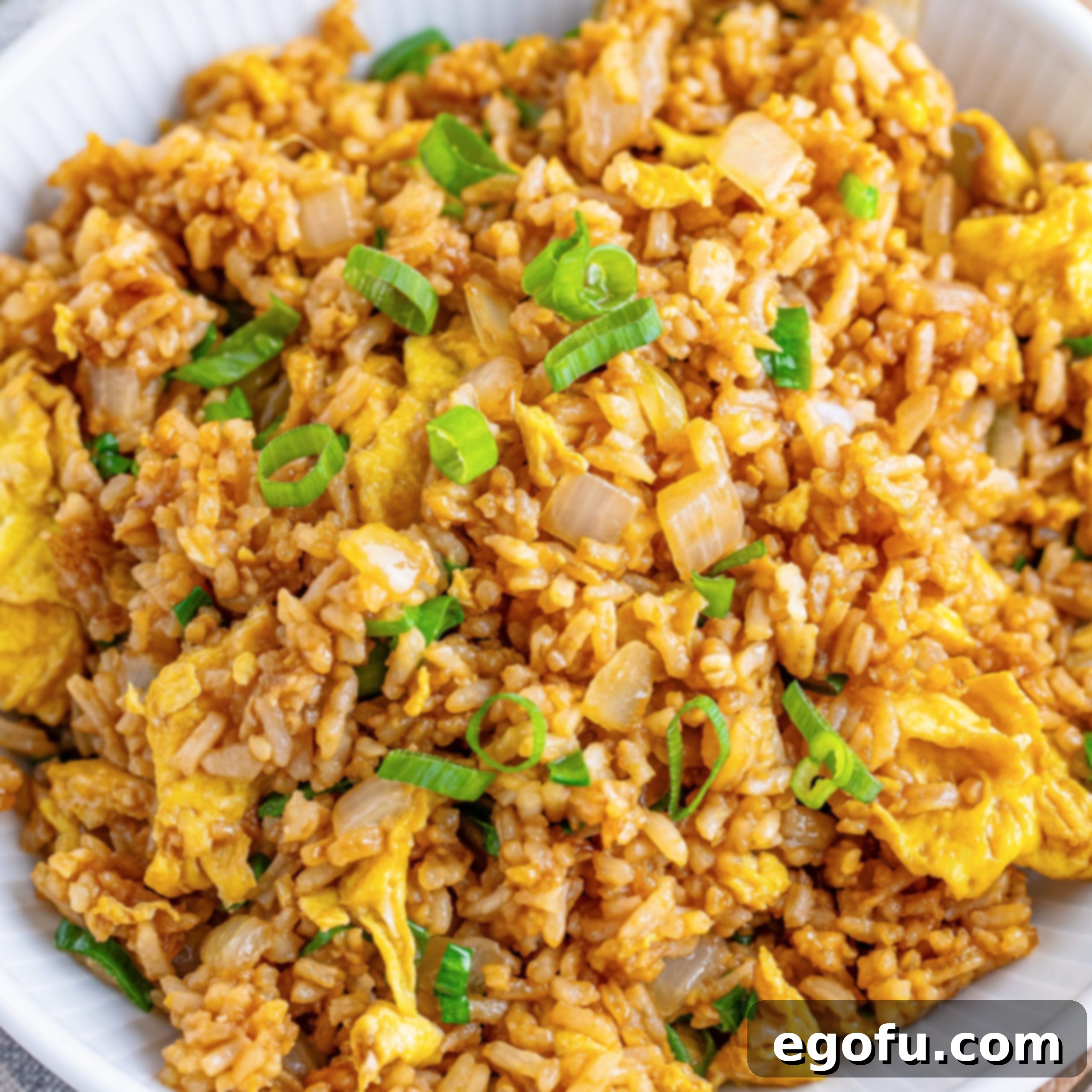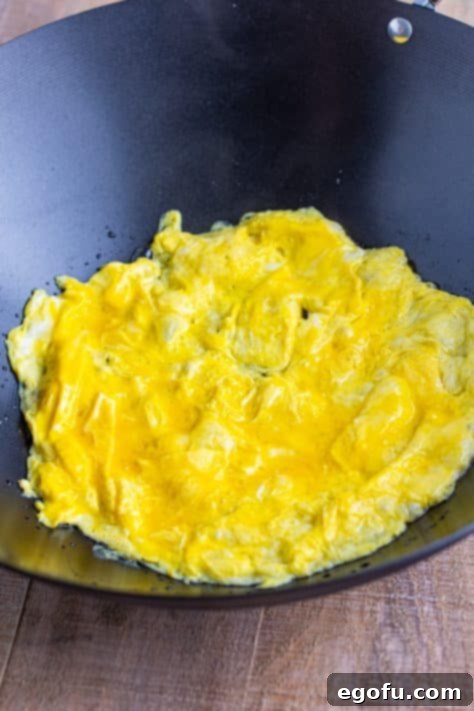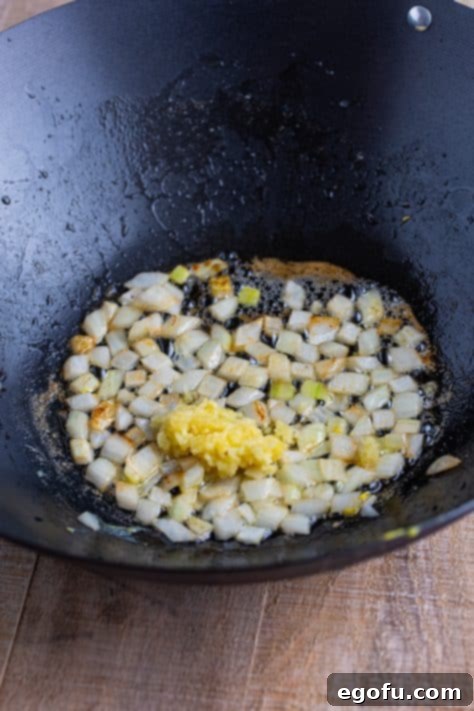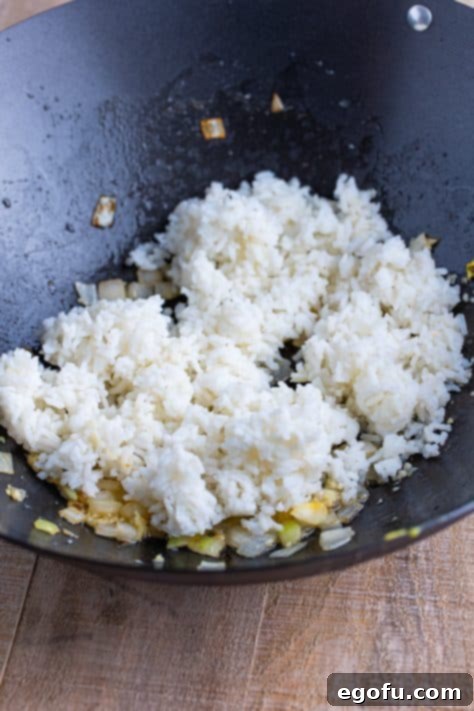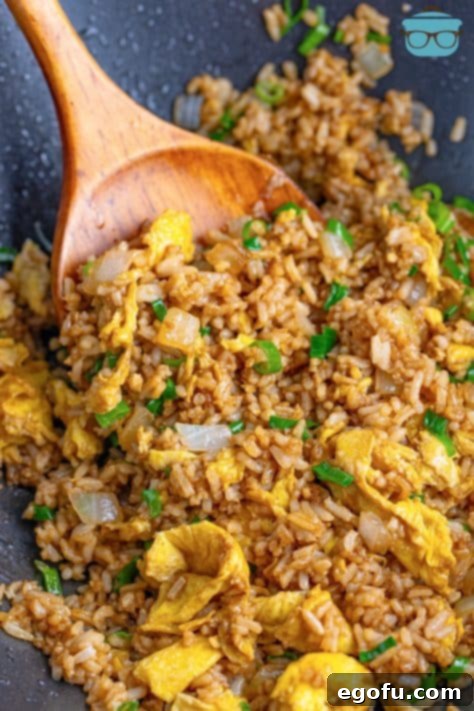Craving that irresistible flavor of your favorite hibachi restaurant right in your own kitchen? Look no further! This Hibachi Fried Rice recipe is your passport to bringing the magic of a sizzling hibachi grill straight to your dining table. It’s incredibly simple, remarkably versatile, and most importantly, bursting with the authentic, savory taste you love. Forget the expensive take-out or the long waits; prepare to whip up a batch of perfectly seasoned, restaurant-quality fried rice that’s fast, fresh, and unbelievably delicious, all from the comfort of your home.
Restaurant-Style Fried Rice: Now Made at Home with Ease
There’s nothing quite like the experience of a hibachi meal – the sizzling grill, the theatrical chef, and of course, the incredible food. From tender Hibachi Steak and juicy Hibachi Chicken to crisp Hibachi Vegetables, and that addictive Yum Yum Sauce, it’s a feast for all the senses. But let’s be honest, while the entertainment is fantastic and the food is undeniably superb, the bill at the end of the meal can often put a damper on the fun. My absolute favorite part of the hibachi experience has always been the fried rice – it’s the ultimate comfort food, savory and satisfying.
Determined to recreate that beloved fried rice at a fraction of the cost, I embarked on a culinary quest. And I’m thrilled to say, I’ve cracked the code! This fantastic homemade copycat recipe delivers all the authentic flavors without breaking the bank. You’ll save money, control your ingredients, and still enjoy that delicious hibachi flavor anytime the craving strikes. The only thing missing will be the chef’s singing and impressive egg-flipping skills – but don’t worry, the incredible taste more than makes up for it!
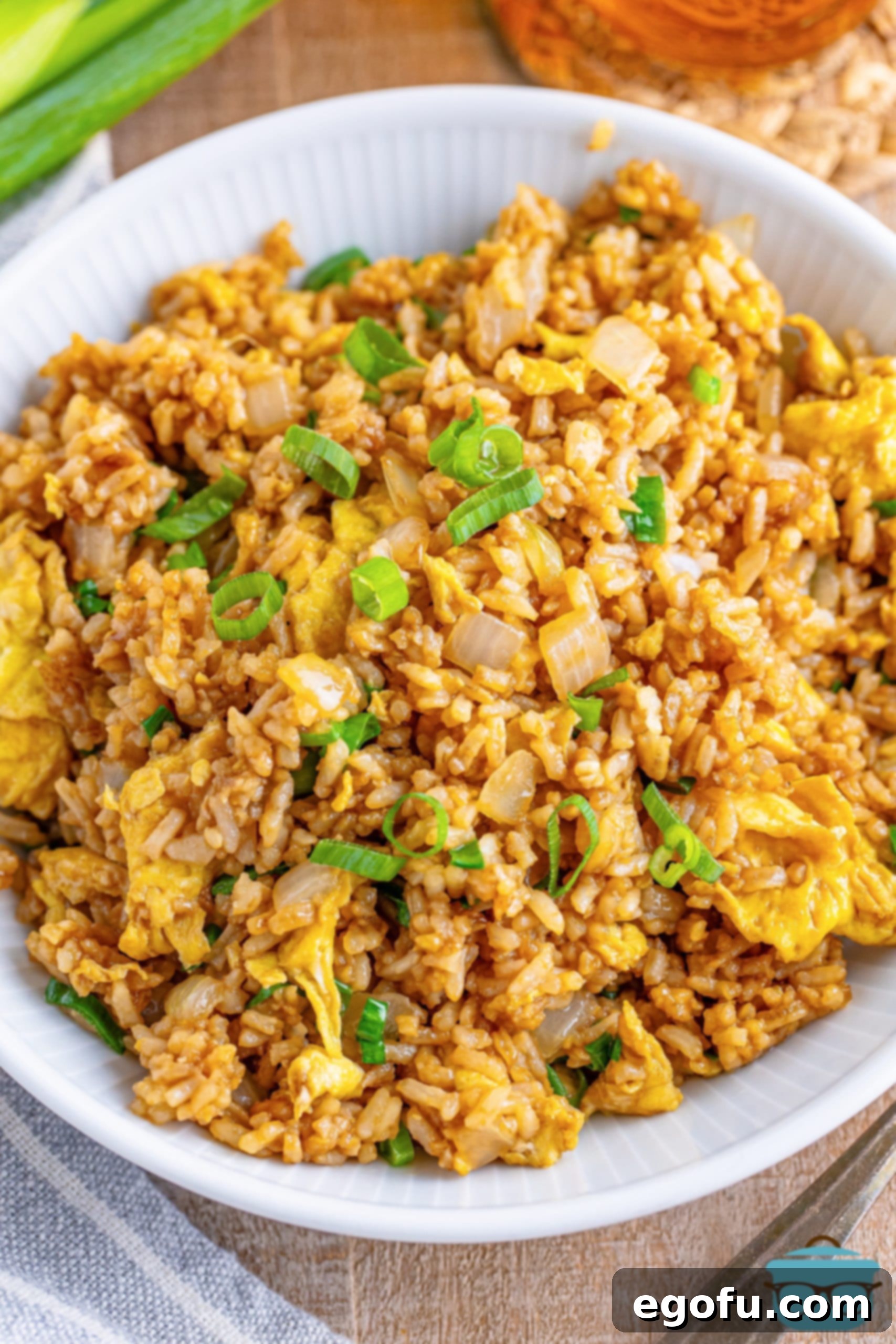
Unlocking the Secrets to Perfect Homemade Hibachi Fried Rice
Achieving that iconic hibachi fried rice flavor and texture at home is simpler than you might think, especially when you know a few key tricks. This section will delve into the essential techniques and tips to ensure your homemade version rivals any restaurant dish. From choosing the right rice to mastering the cooking process, we’ll cover everything you need to create a truly unforgettable meal that will have your family asking for seconds.
The Indispensable Role of Day-Old Rice
Perhaps the single most crucial tip for any fantastic fried rice recipe, especially for hibachi-style, is to use leftover cooked rice – ideally, rice that’s been cooked a day in advance and chilled in the refrigerator. Freshly cooked rice tends to be too moist and sticky, resulting in a mushy fried rice that lacks that desirable crisp-tender texture. Day-old rice, however, loses some of its moisture, making it firmer and allowing the grains to separate beautifully when stir-fried. This separation is key to ensuring each grain gets coated in all the delicious flavors and achieves that slightly crispy exterior. If you’re planning to make this recipe, consider cooking your rice the night before. Simply prepare your preferred long-grain white rice, let it cool completely, and then store it covered in the fridge until you’re ready to cook.
High Heat for Maximum Flavor
Another fundamental element of authentic hibachi cooking is high heat. Fried rice thrives on a hot cooking surface, which allows the ingredients to quickly caramelize and develop deep, complex flavors. Using a wok is traditional and ideal due to its shape and ability to distribute heat evenly, but a large, heavy-bottomed skillet can work wonders too. Ensure your pan is screaming hot before adding your oil and ingredients. This high heat is essential for quickly cooking the eggs, searing the onions, and giving the rice that desired lightly browned, slightly crispy finish without overcooking anything.
Beyond the Basics: Customizing Your Hibachi Fried Rice
While delicious on its own, hibachi fried rice is also incredibly adaptable. Feel free to make it your own by adding your favorite proteins and vegetables. Cooked chicken, beef, or shrimp are fantastic additions, transforming it from a side dish into a complete meal. Simply sauté your chosen protein before adding the onions and garlic, or add pre-cooked protein during the final stages of cooking to warm it through. Classic additions like peas and carrots are always a hit, but don’t stop there! Broccoli florets, corn kernels, mushrooms, or even edamame can add wonderful texture and nutritional value. The beauty of homemade hibachi fried rice is the freedom to customize it to your exact preferences, ensuring every bite is tailored to your taste buds.
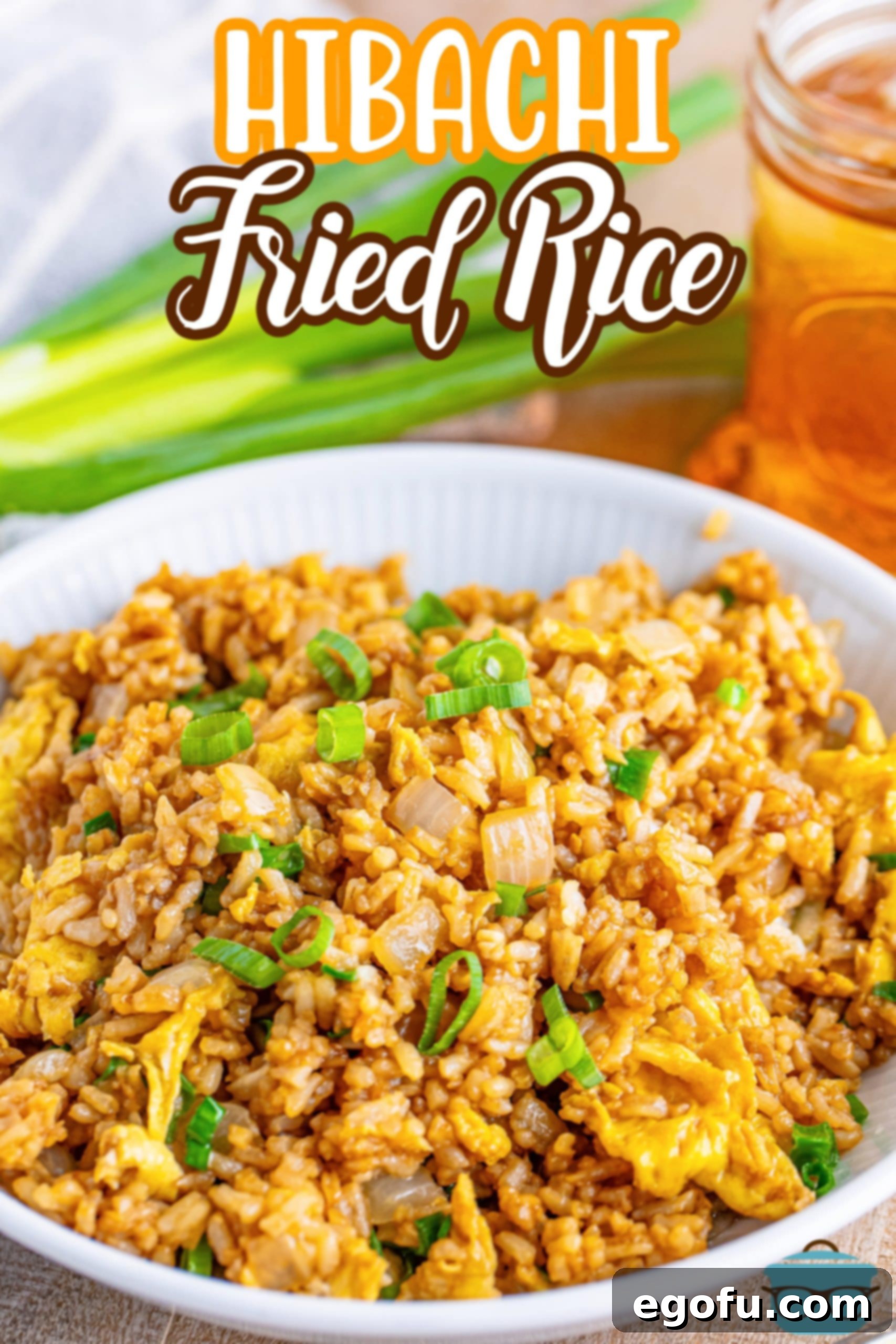
Essential Ingredients for Authentic Hibachi Fried Rice
- Vegetable Oil: A neutral oil is preferred here, as it allows the other flavors to shine without imparting its own taste. Canola, grapeseed, or light olive oil are excellent alternatives if vegetable oil isn’t available. The oil helps achieve that perfect sizzle and prevents sticking.
- Large Eggs: The fluffy, scrambled egg bits are a signature component of hibachi fried rice. Ensure they are well beaten before adding them to the hot wok; this helps them cook quickly and evenly into delicate curds that get distributed throughout the rice.
- Salted Butter: Real salted butter is paramount for that rich, authentic hibachi flavor. While margarine can be used in a pinch, butter brings a depth and savory note that truly elevates the dish, making it taste like it came straight from the grill.
- Small Diced Sweet Onion: Sweet onions caramelize beautifully and add a subtle sweetness and aromatic foundation to the dish. Dicing them small ensures they cook quickly and meld seamlessly with the rice without overpowering it. For a slightly more pungent, garlic-like flavor, a finely diced shallot can be a wonderful substitute.
- Minced Fresh Garlic: This is where a significant portion of the signature hibachi flavor originates. Freshly minced garlic is absolutely essential; pre-minced jarred garlic simply won’t deliver the vibrant, pungent aroma and taste that fresh cloves provide. Don’t skimp on this ingredient – it’s a flavor powerhouse.
- Cooked and Cooled Leftover Long-Grain White Rice: As emphasized, this is the cornerstone of great fried rice. Long-grain white rice, like jasmine or basmati, works best due to its texture. The chilling process firms up the rice grains, preventing them from clumping and allowing them to crisp up perfectly when stir-fried. This step is non-negotiable for achieving the desired restaurant-style texture.
- Soy Sauce: The umami bomb that brings everything together. You can use regular or light (low sodium) soy sauce based on your preference. Dark soy sauce can also be used for a richer color and slightly deeper flavor, but be mindful of its intensity.
- Green Onions (Scallions): Only the vibrant green part of the scallions is needed here, thinly sliced. Added at the very end, green onions provide a fresh, pungent finish, a pop of color, and a subtle oniony bite that complements the richness of the fried rice beautifully.
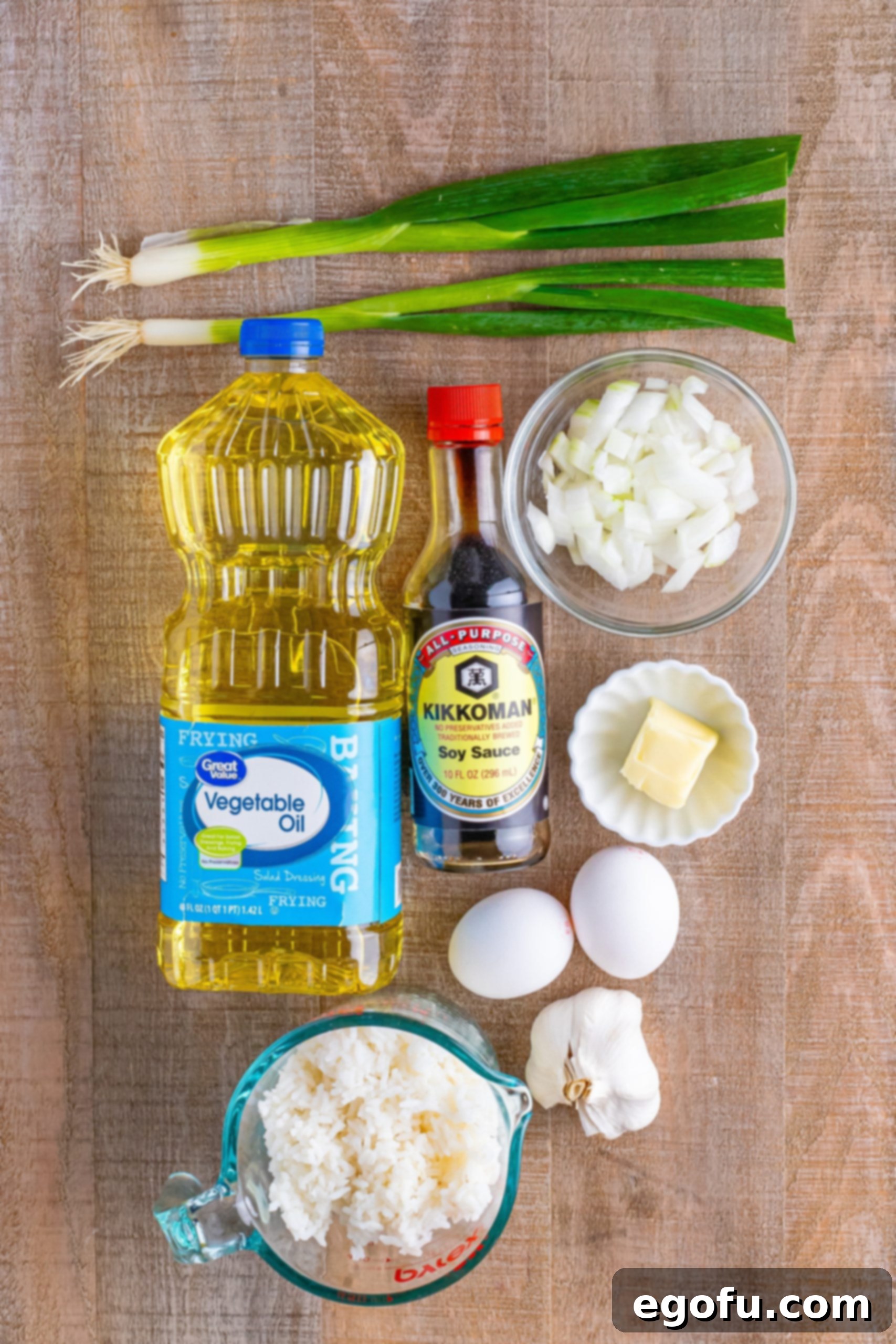
How to Make Hibachi Fried Rice: A Step-by-Step Guide
Get ready to transform simple ingredients into a sensational meal. Follow these easy steps to create your own delicious hibachi fried rice.
1. In a wok or a large, heavy-bottomed skillet, heat two tablespoons of vegetable oil over medium-high heat until shimmering. Achieving a good, hot temperature is crucial for the perfect fried rice texture.
2. Pour in the two well-beaten large eggs. Stir constantly for about 30 seconds to 1 minute, until the eggs are almost cooked but still slightly wet. This ensures they remain tender and don’t become rubbery. Transfer the partially cooked eggs back into the bowl they were beaten in and set aside.
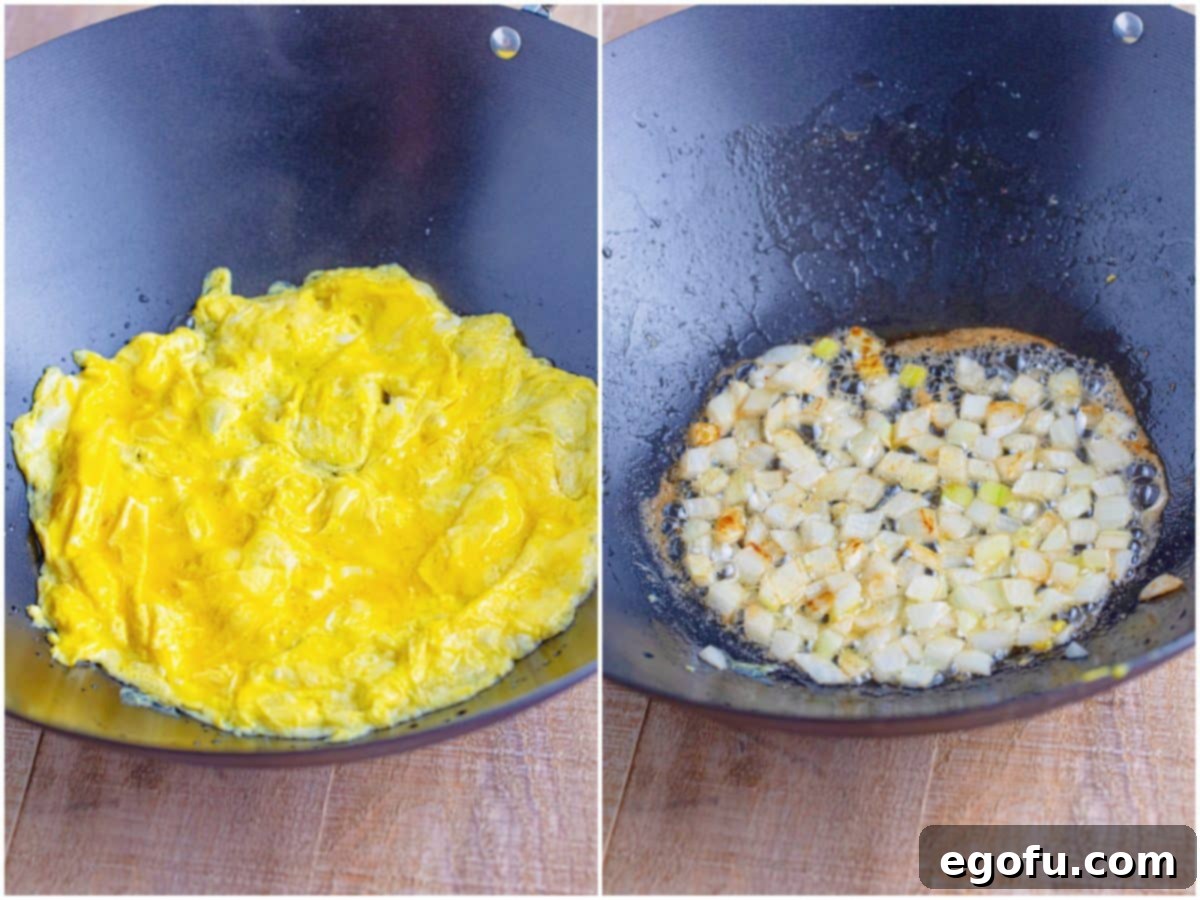
3. Return the wok to the heat, if needed, and add two tablespoons of salted butter. Once the butter has melted and is lightly bubbling, add the half cup of small diced sweet onion. Cook the onions for 3-5 minutes, stirring occasionally, until they become translucent and slightly softened. This step builds the foundational aromatic flavor of the dish.
4. Add three cloves of minced fresh garlic to the wok. Cook for a brief 30 seconds, stirring constantly, until the garlic becomes fragrant. Be careful not to burn the garlic, as it can turn bitter very quickly.
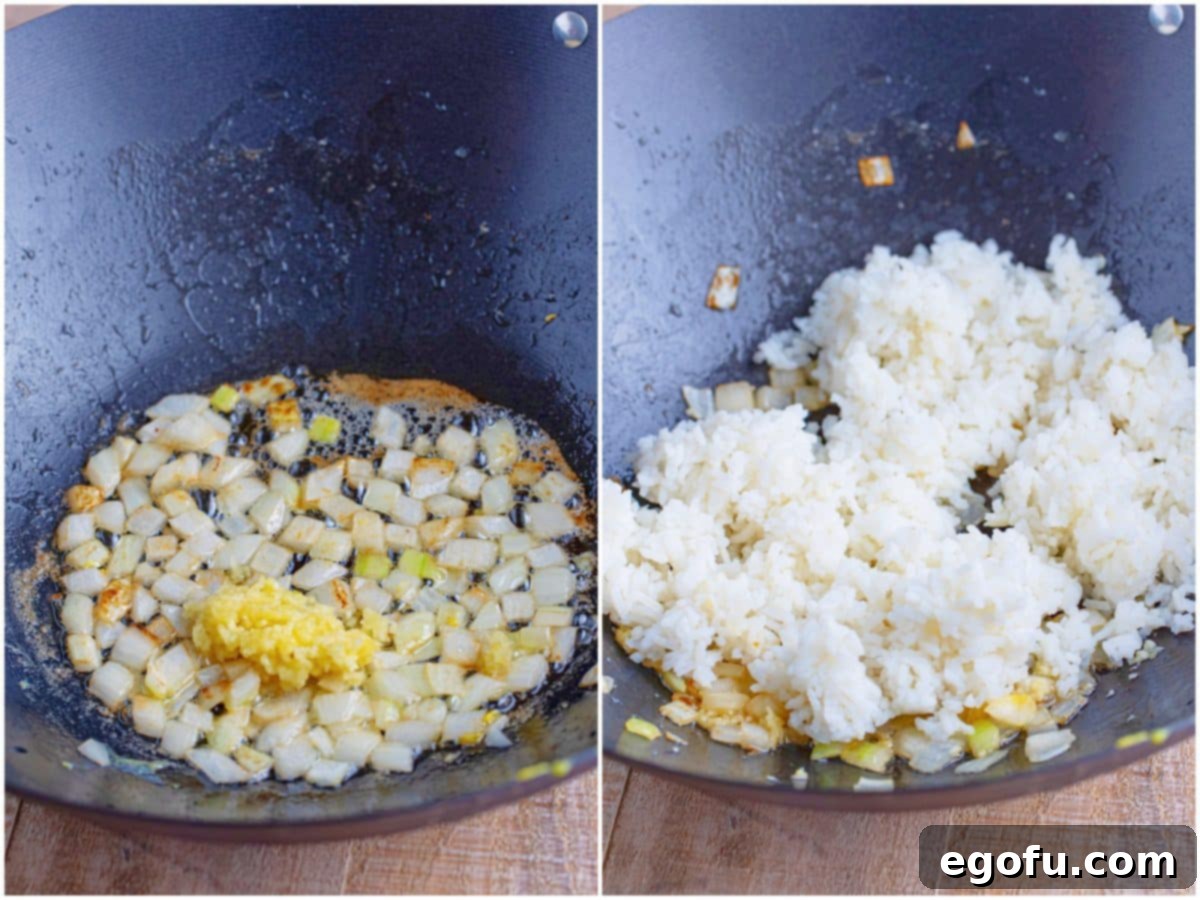
5. Now, add the two cups of cooked and cooled leftover long-grain white rice to the skillet. Stir everything together, breaking up any clumps of rice, and cook for approximately 3-5 minutes, stirring occasionally. The goal is to warm the rice through and allow it to absorb the flavors from the butter, onions, and garlic, and develop a slight crispiness.
6. Incorporate the reserved cooked egg back into the wok. Pour in two tablespoons of soy sauce. Stir well to combine all ingredients, using your spatula or spoon to break the egg into smaller pieces as you mix. Continue cooking for an additional two minutes, allowing the soy sauce to fully coat the rice and for all the flavors to meld together.
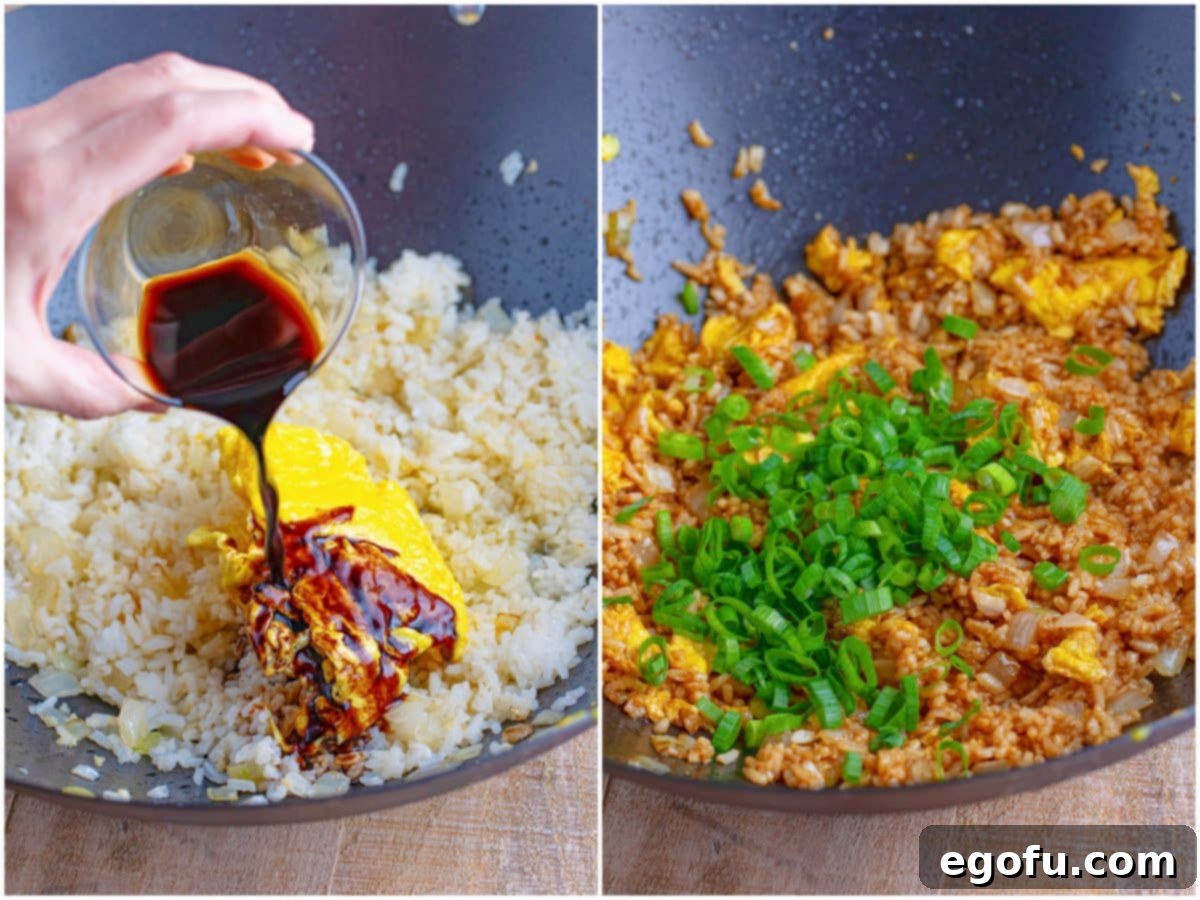
7. Finally, stir in the two thinly sliced green onions (using only the green parts). Give it one last gentle stir to distribute the fresh scallions. Your homemade hibachi fried rice is now ready to be served immediately!
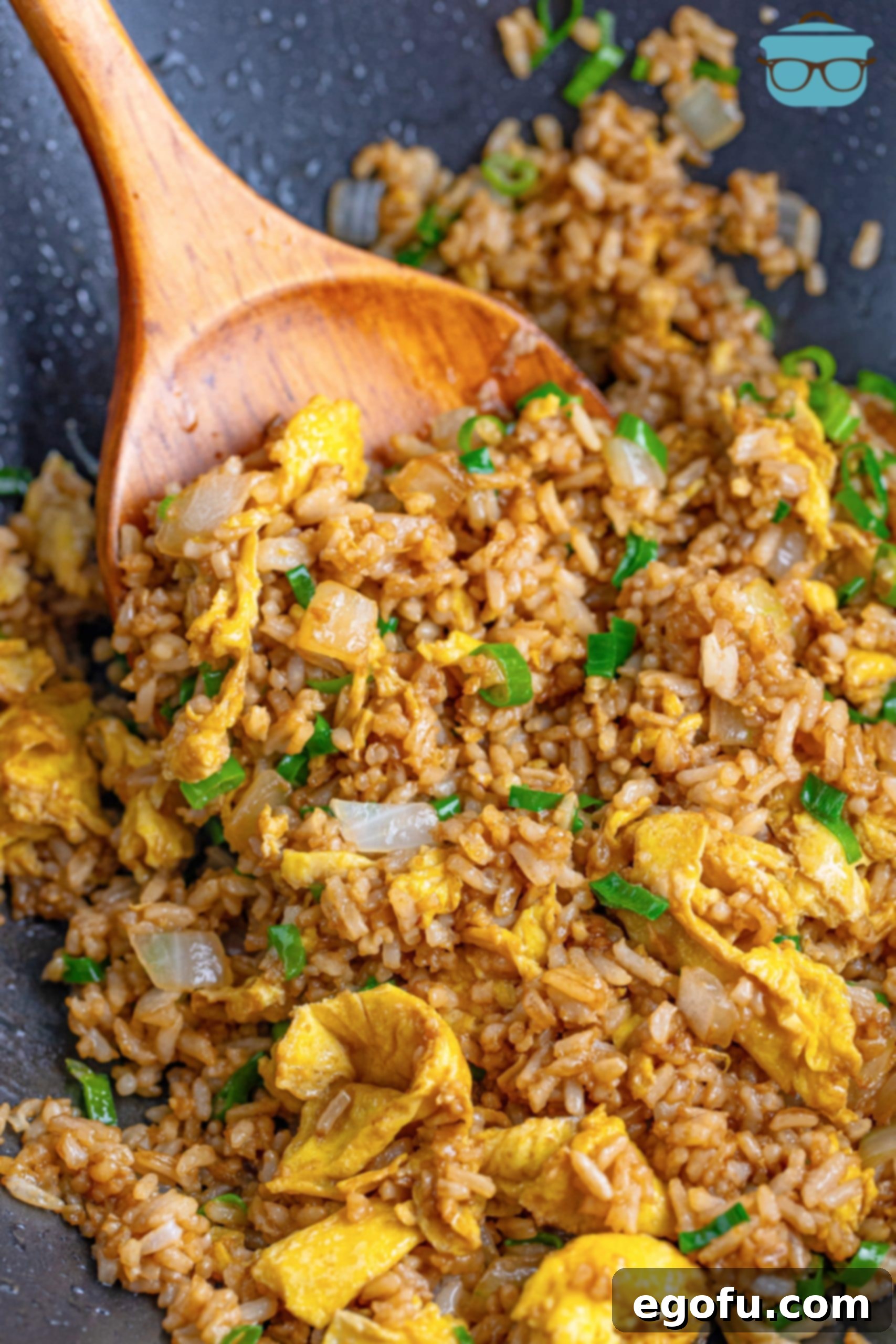
Frequently Asked Questions & Expert Tips for Hibachi Fried Rice
To help you master this delightful dish, here are answers to some common questions and extra tips to enhance your hibachi fried rice experience.
What are the best serving suggestions for Hibachi Fried Rice?
Beyond being a fantastic standalone dish, hibachi fried rice pairs wonderfully with a variety of meals, particularly Asian-inspired cuisine. It’s the perfect accompaniment to all your hibachi favorites like Hibachi Steak, Hibachi Chicken, and Yum Yum Sauce. But its versatility extends beyond! Consider serving it alongside Sweet and Sour Chicken, Asian Lemon Chicken, Bacon Wrapped Shrimp, Honey Garlic Chicken, Sesame Chicken, General Tso’s Chicken, or Orange Chicken. It truly complements a wide range of main courses, making it a go-to side dish.
How do I store and reheat leftover Hibachi Fried Rice?
Proper storage is key to enjoying your fried rice later. Store any leftovers in an airtight container in the refrigerator for up to 3 days. For longer storage, you can freeze it for up to 3 months. When reheating, the best method is to return it to a skillet or wok over medium-high heat. Add a small knob of butter or a splash of oil to prevent sticking and help restore its texture. Stir-fry for a few minutes until it’s heated through and slightly crispy again. While you can reheat it in the microwave, the texture won’t be as satisfyingly crisp as when reheated on the stovetop.
More Delicious Asian-Inspired Recipes to Explore
If you’ve enjoyed making this homemade hibachi fried rice, you’re in for a treat! There’s a whole world of delightful Asian-inspired recipes waiting to be discovered, perfect for expanding your culinary repertoire. Whether you’re looking for more main dishes to pair with your fried rice or other flavorful rice varieties, these recipes promise to satisfy your cravings for bold and comforting flavors. Dive in and find your next favorite meal!
- Hibachi Steak: Perfect for a complete hibachi experience.
- Hibachi Chicken: Another hibachi classic, tender and flavorful.
- Hibachi Vegetables: Crisp and vibrant, a great addition to any meal.
- Yum Yum Sauce: The essential dipping sauce for all your hibachi dishes.
- Mongolian Beef Noodles: A rich and savory noodle dish.
- Vegetable Fried Rice: A versatile and hearty vegetarian option.
- Beef Fried Rice: Packed with savory beef and rice.
- Taco Rice: A fun fusion dish for weeknights.
- Spanish Rice: A flavorful and aromatic rice side.
- Stick of Butter Rice: Rich, creamy, and incredibly comforting.
- Garlic Butter Rice: Simple yet incredibly delicious.
- Ham Fried Rice: A great way to use up leftover ham.
- Spam Fried Rice: A unique and surprisingly tasty twist.
- Chicken Lo Mein: A classic noodle dish that rivals takeout.
- 3-Ingredient Mexican Rice: Quick, easy, and full of flavor.
- Easy Sweet and Sour Chicken: A beloved Chinese-American favorite.
- Easy Sesame Chicken: Crispy chicken with a rich sesame sauce.
- Asian Lemon Chicken: Bright, tangy, and refreshing.
- Chicken Chow Mein Casserole: A hearty, comforting casserole.
- Air Fryer Orange Chicken: Crispy, tangy chicken made easy.
- Honey Garlic Pork Chops: Sweet and savory perfection.
- Air Fryer General Tso’s Chicken: A healthier take on a spicy classic.
- Air Fryer Bang Bang Shrimp: Crispy shrimp with a creamy, spicy sauce.

Hibachi Fried Rice
Pin Recipe
Ingredients
- 2 Tablespoons vegetable oil
- 2 large eggs, well beaten
- 2 Tablespoons salted butter
- ½ cup small diced sweet onion
- 3 cloves garlic, minced
- 2 cups cooked and cooled leftover long-grain white rice
- 2 Tablespoons soy sauce
- 2 green onions (green part only), thinly sliced
Instructions
- In a wok or large skillet over medium-high heat, add 2 Tablespoons vegetable oil.
- Add 2 large eggs, well beaten and stir until almost cooked, they should still appear a little wet, about 30 seconds to 1 minute. Place them back into the bowl you beat them in.

- Add 2 Tablespoons salted butter and 1/2 cup small diced sweet onion, cook until the onions are translucent, about 3-5 minutes, stirring occasionally.

- Add 3 cloves garlic, minced and cook until fragrant, about 30 seconds.

- Add 2 cups cooked and cooled leftover long-grain white rice to the skillet, stir everything together and cook until the rice is warmed through, stirring occasionally. About 3-5 minutes.

- Add the cooked egg and 2 Tablespoons soy sauce, stir to combine and break up the egg into smaller pieces, cook an additional 2 minutes.

- Stir in 2 green onions (green part only), thinly sliced and serve.

Notes
- Refer to the sections above for answers to common questions, ingredient substitutions, and additional tips for customizing your Hibachi Fried Rice.
Nutrition
Carbohydrates: 26 g |
Protein: 6 g |
Fat: 15 g |
Sodium: 583 mg |
Fiber: 1 g |
Sugar: 1 g
Nutritional Disclaimer
“The Country Cook” is not a dietician or nutritionist, and any nutritional information shared is an estimate. If calorie count and other nutritional values are important to you, we recommend running the ingredients through whichever online nutritional calculator you prefer. Calories and other nutritional values can vary quite a bit depending on which brands were used.
